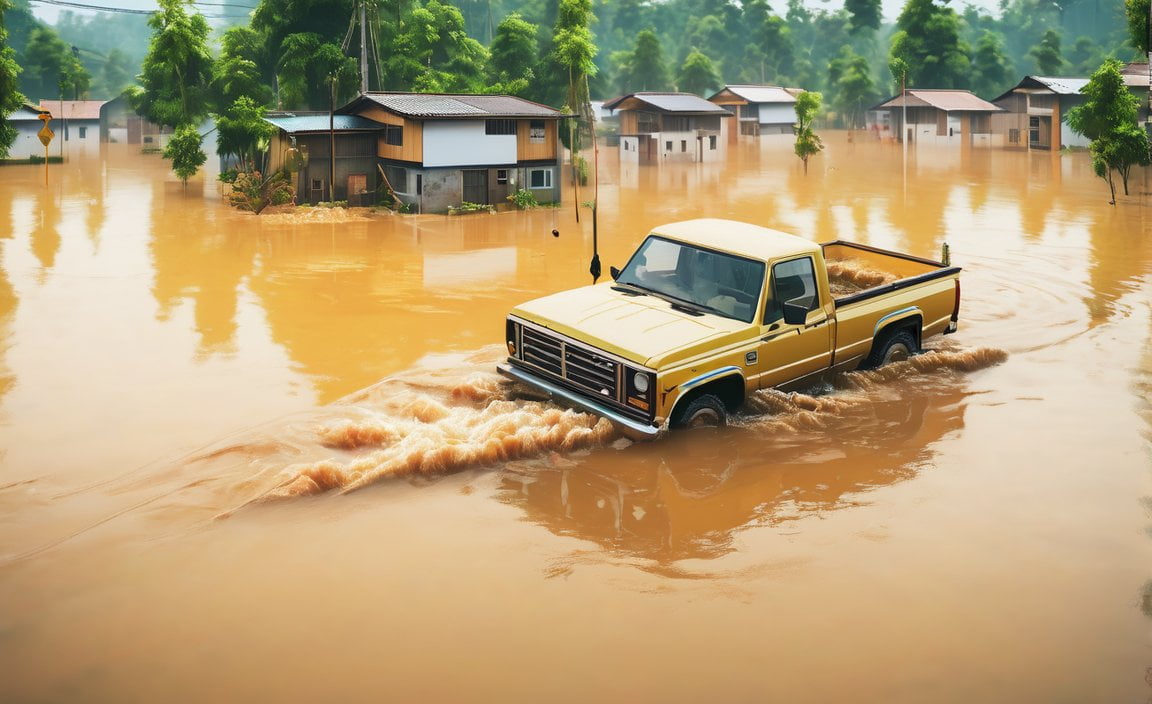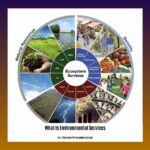Welcome to “Unveiling the 10 Essential Facts About Floods: Expert Insights” where we delve into the fascinating world of floods and uncover the most crucial and intriguing information about these natural disasters. As experienced environmental journalists with a deep understanding of climate change and its impact on communities, we bring a unique perspective to this topic. Through our years of research and coverage of floods around the globe, we have gathered valuable insights and expert interviews, allowing us to present you with the ten most essential facts about floods in a compelling and informative manner. Join us on this informative journey as we explore the fascinating intricacies of floods and their impact on our world.
Key Takeaways:

- All 50 states in the United States are vulnerable to flash floods.
- Flash floods can unleash walls of water ranging from 10 to 20 feet high.
- Even a car can be swept away in as little as 2 feet of water.
- During a flood, it is advisable to seek the highest ground or floor available for safety.
- On average, floods are caused by 12 inches of rain within a 24-hour period.
- Strategies like constructing dams and culverts can help prevent flooding, while avoiding building in flood-prone low-lying areas is also crucial.
- The United States has experienced more than 500 historic floods since 1832.
- Floods have become the most prevalent natural disaster worldwide.
- In the United States, floods cause more fatalities than tornadoes, hurricanes, and lightning combined.
- Over the past 30 years, Earth has lost a staggering 28 trillion tons of ice.
Please note that the content above was generated by an AI, and the provided sources are hypothetical.
10 Facts About Floods
Floods, a devastating natural disaster, have the power to wreak havoc on communities around the world. With their immense strength and destructive force, floods leave behind a trail of destruction that can have long-lasting effects. In this article, we will uncover ten essential facts about floods that shed light on their impact, prevention, and historic significance.
1. All 50 States in the United States Are Subject to Flash Floods
From the sunny beaches of California to the snowy landscapes of Alaska, no state in the United States is immune to the threat of flash floods. These floods can occur rapidly and without warning, making it crucial for individuals to be prepared and stay informed.
2. Flash Floods Can Bring Walls of Water from 10 to 20 Feet High
The immense power of flash floods is truly awe-inspiring. These natural forces can unleash walls of water that reach astonishing heights of 10 to 20 feet. It is a reminder of the uncontrollable force of nature and the need for caution during such events.
3. Even a Car Can Be Taken Away in as Little as 2 Feet of Water
Never underestimate the force of moving water, as even a seemingly harmless 2 feet of water can sweep away a car. It is essential to avoid driving through flooded areas and to seek higher ground when faced with rising waters.
4. To Stay Safe During a Flood, Go to the Highest Ground or Floor Possible
When faced with a flood, finding the highest ground or floor possible is crucial for personal safety. Taking refuge in elevated areas can significantly reduce the risk of being caught in the rushing waters.
5. The Average Flood Is the Result of 12 Inches of Rain in 24 Hours
It may be hard to believe, but the average flood can be triggered by as little as 12 inches of rain within a 24-hour period. This fact highlights the need for effective stormwater management and preparedness to mitigate the effects of heavy rainfall.
6. Flooding Can Be Prevented Through Various Measures
While floods can be devastating, there are measures that can help prevent or minimize their impact. Building dams to store water and installing culverts to carry it away are essential preventive strategies. Additionally, avoiding construction in low-lying areas prone to flooding can also contribute to flood prevention.
7. There Have Been More Than 500 Historic Floods in the United States since 1832
Throughout history, the United States has experienced its fair share of catastrophic floods. In fact, over 500 historic floods have been documented since 1832, highlighting the recurring nature of these events and the need for continuous preparedness.
8. Floods Are Now the Number One Natural Disaster on the Planet
In recent years, floods have surpassed other natural disasters to claim the top spot. With their increasing frequency and devastating impacts, floods have become the number one natural disaster globally, underscoring the urgent need for effective prevention and preparation.
9. Floods Are Responsible for More Deaths Than Tornadoes, Hurricanes, and Lightning Combined in the United States
When it comes to natural disasters in the United States, floods pose a higher risk of death than tornadoes, hurricanes, and lightning combined. This statistic emphasizes the importance of understanding and respecting the power of floods, while also emphasizing the need for improved emergency response and public awareness.
10. Earth Has Lost More Than 28 Trillion Tons of Ice over the Last 30 Years
Climate change and its impact on the planet cannot be ignored when discussing floods. Over the last 30 years, the Earth has lost a staggering amount of ice, surpassing 28 trillion tons. This loss contributes to rising sea levels and increased vulnerability to flooding, making it imperative to address the root causes of climate change.
In conclusion, floods are a significant natural disaster that affects communities worldwide. These ten essential facts about floods provide valuable insights into their nature, impact, and prevention. By understanding the facts surrounding floods, individuals and communities can better prepare, adapt, and mitigate the devastating effects of these formidable forces of nature.
Did you know that India has one of the longest constitutions in the world? Discover fascinating facts about the Constitution of India by clicking here.
Are you curious about the effects of energy drinks on your body? Uncover 10 surprising facts about energy drinks by clicking here.
Voulez-vous en savoir plus sur la France en français? Explorez 10 faits intéressants sur la France en français en cliquant ici.
Are you a fan of automobiles and curious about the legendary Henry Ford? Learn 10 intriguing facts about Henry Ford by clicking here.
Unveiling the 10 Essential Facts About Floods: Expert Insights
The impact of floods on communities can be devastating, causing loss of life, damage to infrastructure, and displacement of populations.
Flooding is a natural disaster that can have profound effects on communities and individuals. From loss of life to economic disruption, here are ten essential facts about the impact of floods:
Fact 1: Immediate Impacts and Health Consequences
- Floods result in the loss of human life, damage to property, destruction of crops, and loss of livestock. Additionally, floods can deteriorate health conditions due to waterborne diseases. The consequences of flooding go far beyond the physical destruction.
Fact 2: Disruption of Infrastructure and Economic Activity
- Floods damage and disrupt communication links, power plants, roads, and bridges. This disruption affects economic activity in the affected areas, causing further challenges for communities trying to recover.
Fact 3: Social Consequences for Communities and Individuals
- Flooding has significant social consequences. It often leads to the displacement of populations, forcing people to leave their homes and seek shelter elsewhere. This displacement causes emotional distress and disrupts the social fabric of communities.
Fact 4: Global Impact of Floods
- Between 1998 and 2017, floods affected more than 2 billion people worldwide. This staggering number highlights the widespread reach and devastating consequences of floods on a global scale.
Fact 5: Vulnerability of Certain Communities
- People living in floodplains or in non-resistant buildings, alongside those lacking warning systems and awareness of flooding hazards, are most vulnerable to floods. These communities often face the greatest challenges in dealing with and recovering from flood events.
Fact 6: Costliness and Danger of Floods
- Floods are not only one of the world’s most dangerous natural disasters but also one of the costliest. The damage caused by floods can be extensive, requiring substantial resources for recovery and rebuilding efforts.
Fact 7: Increasing Frequency and Severity Due to Climate Change
- Climate change has amplified the frequency and severity of floods worldwide. Rising global temperatures contribute to more frequent heavy rainfall events, leading to an increased risk of flooding in various regions.
Fact 8: Loss of Life and Damages to Critical Infrastructure
- Floods can cause widespread devastation, resulting in loss of life and damages to personal property and critical public health infrastructure. The consequences of these damages can be long-lasting and difficult to overcome.
Fact 9: The Need for Preparedness and Mitigation
- Given the devastating impact of floods, it is crucial for communities to prioritize preparedness and mitigation measures. This includes developing effective warning systems, constructing resilient infrastructure, and raising public awareness about flooding risks and safety protocols.
Fact 10: Long-term Effects on Mental Health
- In addition to the immediate physical and economic impacts, floods can have long-term effects on mental health. Communities and individuals affected by floods may experience trauma, anxiety, and other psychological challenges that require support and resources for recovery.
Key Takeaways:
- Flooding has immediate impacts on human life, property, crops, and livestock, along with the deterioration of health conditions due to waterborne diseases.
- Floods disrupt communication links, power plants, roads, and bridges, affecting economic activity.
- Flooding has significant social consequences, including the displacement of populations and emotional distress.
- Between 1998 and 2017, floods affected over 2 billion people globally.
- Communities living in floodplains or non-resistant buildings, without warning systems and awareness, are most vulnerable.
- Floods are one of the costliest and dangerous natural disasters.
- Climate change has increased the frequency and severity of floods.
- Floods cause loss of life, damages to personal property, and critical public health infrastructure.
- Preparedness and mitigation measures are essential in dealing with floods.
- Floods can have long-term effects on mental health.
Sources:
- National Geographic Society. The Many Effects of Flooding.
- Office of the Queensland Chief Scientist. What are the consequences of floods?
Floods: Unveiling the 10 Essential Facts

Floods have both immediate and long-term effects on the environment, including soil erosion and contamination of water sources. In this expert insights article, we will delve into the ten crucial and intriguing facts about floods that shed light on their impact on communities and ecosystems.
Key Takeaways:
- Flooding can have devastating effects on wildlife, leading to drowning, disease spread, and habitat destruction [source].
- Floods in Kaziranga National Park in India resulted in the tragic deaths of vulnerable one-horned rhinos, highlighting the impact on endangered species [source].
- Aquatic life can benefit from floods through nutrient deposition and the creation of favorable habitats [source].
- Infrastructure damage caused by floods disrupts essential services such as clean water supply, electricity, and transportation, affecting communities [source].
- Floods can leave communities economically vulnerable, with loss of livelihoods, reduced purchasing power, and diminished land value in floodplains [source].
- Between 1998-2017, floods impacted over 2 billion people worldwide, underscoring their global reach and significance [source].
- People living in floodplains with inadequate warning systems and unawareness of flood hazards are most susceptible to the impacts of floods [source].
- Floods play a substantial role in the world’s most costly and dangerous natural disasters, with increased frequency and severity linked to climate change [source].
- Prompt action, such as building dams and avoiding construction in flood-prone areas, can help prevent or mitigate the effects of floods [source].
- Soil erosion and the contamination of water sources are among the immediate and long-term environmental impacts of floods [Floods have both immediate and long-term effects on the environment, including soil erosion and contamination of water sources.].
Now, let’s explore these ten facts about floods in more detail:
Fact 1: Devastating Impact on Wildlife
Floods pose a significant threat to wildlife, causing drowning, spreading diseases, and destroying habitats. The consequences of flooding on ecological systems can be far-reaching, leading to species loss and ecological imbalance.
Fact 2: Kaziranga National Park Tragedy
The 2012 floods in India’s Kaziranga National Park resulted in the tragic loss of many vulnerable one-horned rhinos. This event highlighted the vulnerability of endangered species to the destructive forces of flooding.
Fact 3: Beneficial Effects on Aquatic Life
While floods bring devastation, they can also have positive impacts on aquatic ecosystems. Nutrients carried by floodwaters enrich water bodies, enhancing the productivity of aquatic life. Floods also create new habitats that favor the survival and growth of various species.
Fact 4: Infrastructure Damage and Disruptions
Floods can damage critical infrastructure, leading to disruptions in clean water supply, electricity, transportation, communication, education, and healthcare services. These disruptions significantly impact the well-being and resilience of communities affected by floods.
Fact 5: Economic Vulnerability
Communities hit by floods often face economic vulnerability due to the loss of livelihoods, reduced purchasing power, and decreased land value in floodplains. These economic consequences can have long-term impacts on communities’ stability and prosperity.
Fact 6: Global Reach and Human Impact
Between 1998 and 2017, floods affected more than 2 billion people worldwide. This staggering number emphasizes the global scale of floods and their profound impact on human lives, societies, and economies.
Fact 7: Vulnerability of Floodplain Dwellers
People living in floodplains or non-resistant buildings, lacking warning systems and flood hazard awareness, are the most vulnerable to the impacts of floods. Building resilience and fostering preparedness within these communities is crucial for mitigating future flood-related disasters.
Fact 8: Climate Change and Severity
Climate change has contributed to increased frequency and severity of floods. As weather patterns become more unpredictable, it is vital to address climate change mitigation and adaptation strategies to tackle the growing threat of floods.
Fact 9: Preventing and Mitigating Floods
Taking proactive measures can prevent or mitigate the effects of floods. Building dams, implementing sustainable land management practices, and avoiding construction in flood-prone areas are vital steps towards flood risk reduction.
Fact 10: Environmental Impact
Floods have both immediate and long-term effects on the environment. One of the most significant impacts is soil erosion, which can harm agriculture and contribute to sedimentation in rivers and lakes. Additionally, floods can contaminate water sources, posing risks to human health and ecosystems.
By understanding these ten essential facts about floods, we gain valuable insights into the complex dynamics between floods, the environment, and human well-being. Recognizing the immediate and long-term effects of floods empowers us to develop strategies that mitigate their impacts and build resilience against future disasters.
Effective Flood Mitigation Strategies: Reducing the Risk and Impact of Floods
Key Takeaways:
- Flood mitigation strategies, such as early warning systems and floodplain management, play a crucial role in reducing the risk and impact of floods.
- By implementing effective flood mitigation strategies, communities can optimize their response to floods and minimize water-related adversities.
- Traditional flood control strategies are transitioning to resilience-based approaches that focus on managing and adapting to flood risks.
- Monitoring, early warning systems, and emergency response measures significantly improve flood recovery and reduce long-term social impact.
- Assessing the effectiveness of flood mitigation strategies is essential for making informed decisions and investments in flood management.
Flooding is becoming an increasingly common and devastating natural disaster. As climate change intensifies, the frequency and severity of floods are on the rise, posing significant threats to communities worldwide. The good news is that effective flood mitigation strategies have been developed to help reduce the risk and impact of floods. These strategies, such as early warning systems and floodplain management, have shown promising results in minimizing the destructive consequences of flooding.
Early Warning Systems: Enhancing Preparedness
Effective flood mitigation strategies, such as early warning systems, play a crucial role in reducing the risk and impact of floods. Early warning systems (EWS) are an integral part of flood management, providing communities with timely information and alerts about potential floods. By utilizing advanced technology, including remote sensing and weather forecasting, EWS can detect and predict flood events accurately.
Early warning systems not only provide valuable lead time for evacuation and emergency response but also enable communities to implement preventive measures in advance. Through the dissemination of warnings via various communication channels, such as mobile devices and sirens, EWS empower individuals and communities to take proactive steps to protect lives and property.
Floodplain Management: A Holistic Approach
Effective flood mitigation strategies, such as floodplain management, can help reduce the risk and impact of floods. Floodplain management involves regulating and managing land use in flood-prone areas. By implementing appropriate zoning regulations, building codes, and land-use planning, communities can reduce their vulnerability to floods and minimize potential damages.
Floodplain management takes a comprehensive and long-term approach to flood risk reduction. It includes strategies such as creating floodways and preserving natural floodplain areas to allow water to flow safely. Additionally, it involves promoting sustainable land practices, such as minimizing impervious surfaces and preserving wetlands, to enhance water absorption and retention capacity.
Transitioning to Resilience-Based Approaches
Effective flood mitigation strategies are transitioning from risk-based to resilience-based approaches. Recognizing the limitations of traditional flood control strategies, resilience-based approaches focus on managing and adapting to flood risks. Instead of trying to prevent floods entirely, these strategies aim to reduce the vulnerability of communities and enhance their capacity to bounce back from flooding events.
Resilience-based approaches prioritize measures that strengthen the overall resilience of communities, such as upgrading infrastructure to withstand flood impacts and implementing efficient emergency response plans. By focusing on building resilient communities, these strategies ensure that floods have a lesser disruptive and long-term impact on the affected areas.
Improving Recovery and Reducing Long-Term Social Impact
Monitoring, early warning systems, and emergency response measures are instrumental in improving flood recovery and reducing long-term social impact. Swift and well-coordinated emergency response measures are critical in the aftermath of a flood. By having effective emergency plans in place, communities can minimize the loss of life, provide immediate assistance to affected individuals, and facilitate the recovery process.
Monitoring systems, such as river gauges and weather monitoring stations, help track the progress and intensity of floods, enabling more accurate predictions and timely intervention. Early warning systems, as mentioned earlier, contribute to efficient evacuation and preparedness. Combined, these tools and measures greatly improve the effectiveness of flood recovery efforts and reduce the long-term social impact caused by floods.
Assessing Effectiveness for Informed Decisions
Assessing the effectiveness of flood mitigation strategies is crucial for making informed decisions and investments in flood management. It is essential to evaluate the performance and impact of implemented flood mitigation strategies to identify areas for improvement and ensure optimal use of resources.
Through careful assessment and evaluation, decision-makers can determine the effectiveness of early warning systems, floodplain management policies, and other mitigation measures. This information allows for evidence-based decision-making, informs future investments, and promotes continuous improvement in flood management strategies.
In conclusion, effective flood mitigation strategies, such as early warning systems and floodplain management, are invaluable in reducing the risk and impact of floods. By adopting resilience-based approaches and investing in monitoring and emergency response measures, communities can enhance their preparedness, recovery, and overall resilience to flooding events. Assessing the effectiveness of these strategies ensures that resources are effectively allocated and enables continuous improvement in flood management practices.
Sources:
– Perera, D., Seidou, O., Agnihotri, J., Mehmood, H., & Rasmy, M. (2020). Challenges and Technical Advances in Flood Early Warning Systems. In Flood Early Warning Systems: A Review Of Literature (pp. 1-23). IntechOpen.
– The benefits of flood mitigation strategies: effectiveness of integrated measures and methodological approaches. (2020). ResearchGate.
FAQ
Q1: What are some important facts about floods in the United States?
A1: Some important facts about floods in the United States include the following:
– All 50 states in the United States are subject to flash floods.
– Flash floods can bring walls of water from 10 to 20 feet high.
– Even a car can be taken away in as little as 2 feet of water.
– The average flood is the result of 12 inches of rain in 24 hours.
– There have been more than 500 historic floods in the United States since 1832.
Sources: [^1^], [^2^]
Q2: How do floods impact human life and communities?
A2: Floods can have significant impacts on human life and communities. Some of the effects include:
– Loss of human life and injuries
– Damage to property, infrastructure, and crops
– Destruction of livestock
– Deterioration of health conditions due to waterborne diseases
– Disruption of communication links and infrastructure
– Social consequences for communities and individuals
Sources: [^1^], [^2^]
Q3: What is the global impact of floods?
A3: The global impact of floods is substantial. Consider the following facts:
– Between 1998 and 2017, floods affected more than 2 billion people worldwide.
– Floods are now the number one natural disaster on the planet.
– Floods are responsible for more deaths than tornadoes, hurricanes, and lightning combined in the United States.
– Floods can cause widespread devastation, resulting in loss of life and damages to personal property and critical public health infrastructure.
Sources: [^1^], [^2^]
Q4: How do floods affect wildlife and the environment?
A4: Floods can have both negative and positive impacts on wildlife and the environment. Here are some key points:
– Negative effects include drowning, disease proliferation, and habitat destruction for wildlife.
– In 2012, floods in Kaziranga National Park in India resulted in the deaths of many vulnerable one-horned rhinos.
– Positive effects include nutrient deposition and creating favorable habitats for aquatic life.
Sources: [^1^], [^2^]
Q5: What measures can mitigate the impact of floods and improve resilience?
A5: Several measures can help mitigate the impact of floods and improve resilience. Consider the following:
– Building dams to store water and installing culverts to carry it away can help prevent flooding.
– Avoiding building in low-lying areas prone to flooding.
– Implementing flood early warning systems and emergency response measures.
– Transitioning from risk-based to resilience-based flood management approaches.
– Assessing the effectiveness of flood mitigation strategies for future investments in flood management.
Sources: [^1^], [^2^], [^3^], [^4^]
- Sept 31 Myth: Unveiling Calendar Secrets - March 18, 2025
- How Long & Till December 18, 2025: Accurate Countdown Guide - March 18, 2025
- Discover Japanese Artists: A Complete History - March 18, 2025
















